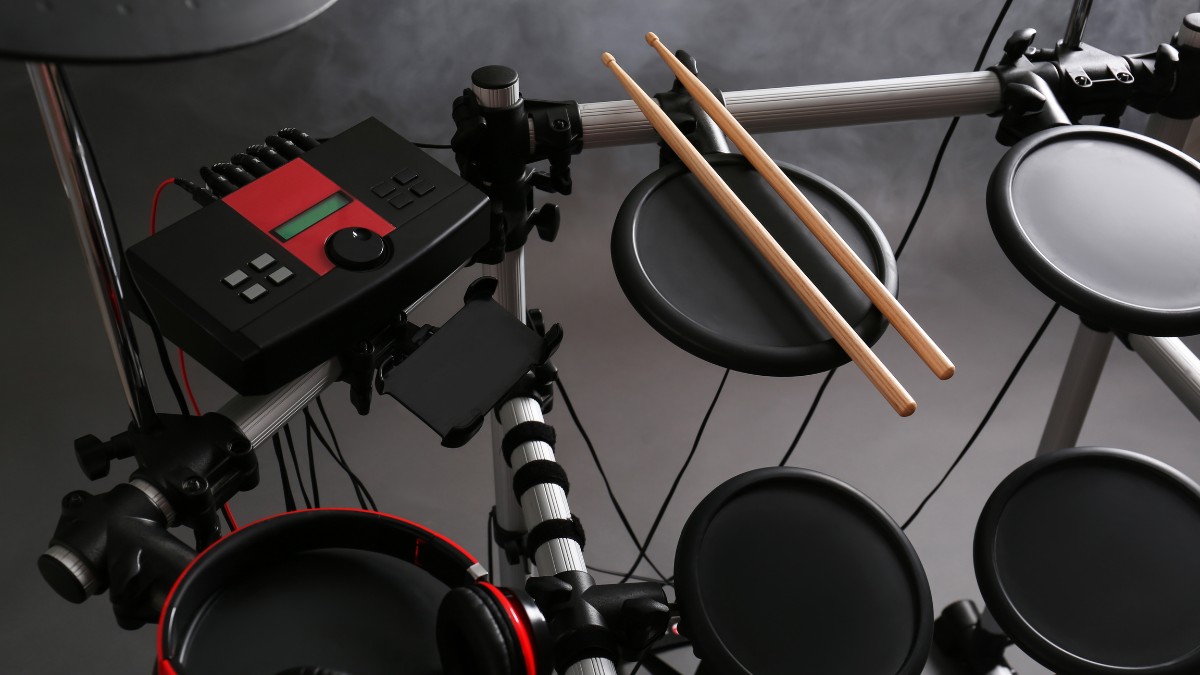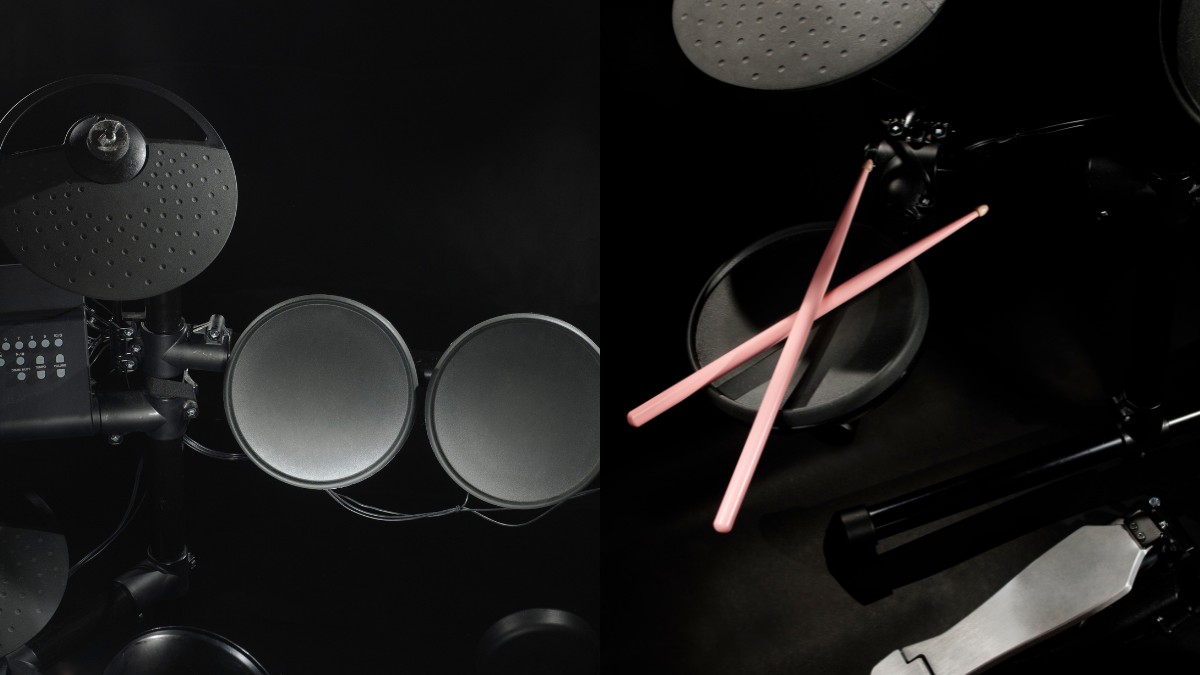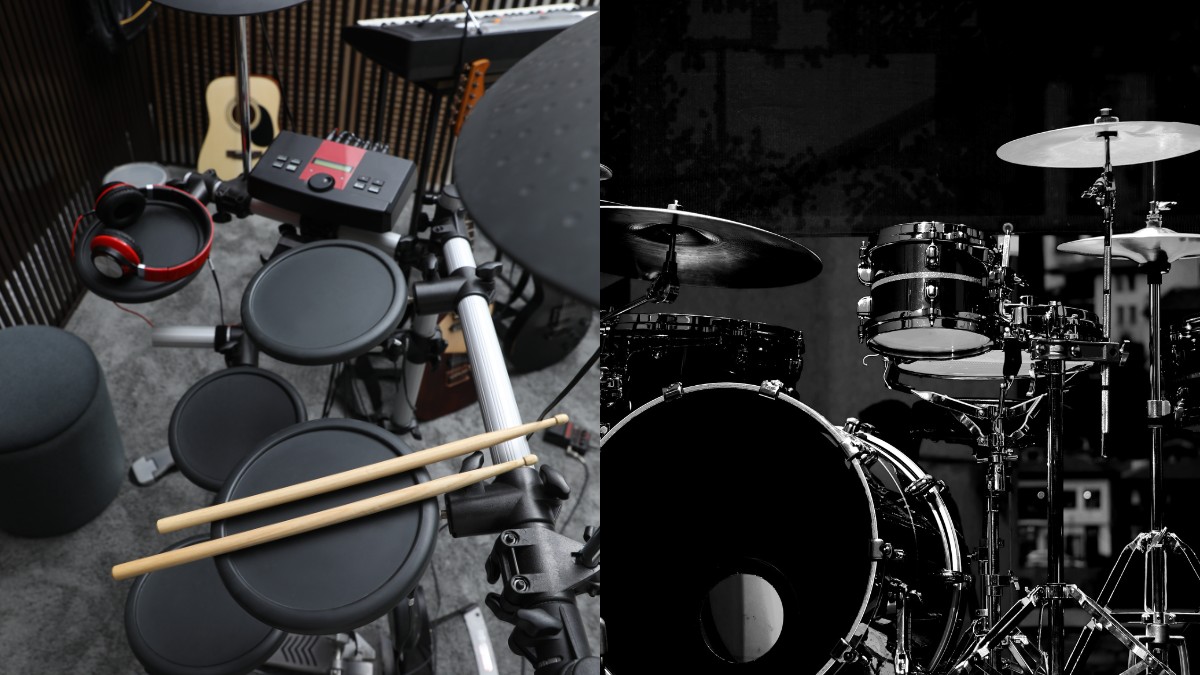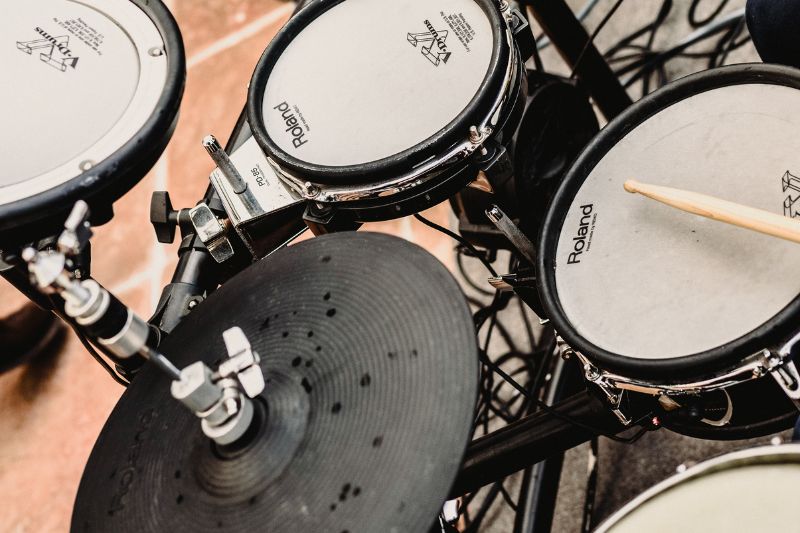How Do Electronic Drums Work?
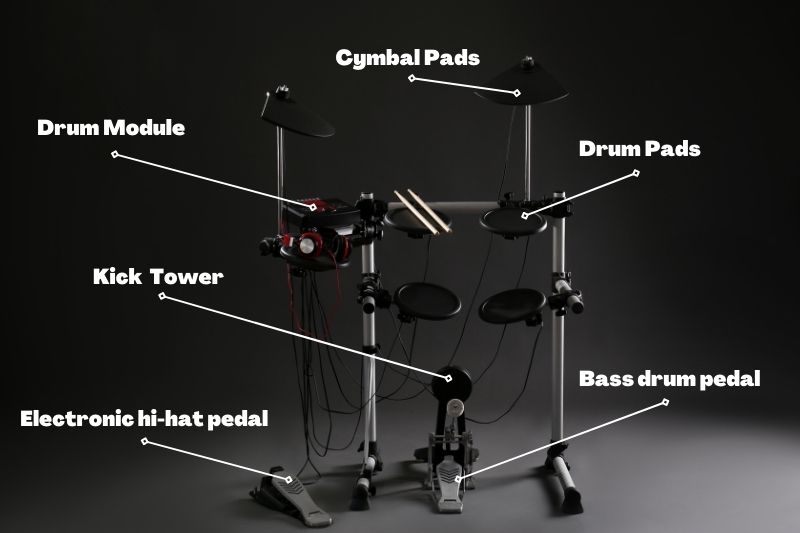
An electronic drum kit has two main components: a drum module and drum pads. Every drum or cymbal pad is connected to the drum module, which produces the sounds with the help of the sensors built into the pads. A drum module can control volume, sensitivity, and many different sounds.
Electronic drums work a lot differently than acoustic drums. If the drum module isn’t powered on, then the e-drum kit won’t produce any sounds other than the drum stick hitting the pad. The sound comes from the drum module (also referred to as the “brain”) that turns all the hits on the pads to the sounds they are assigned.
The drum module needs information from the sensors built into the drum pads to properly calculate and produce the correct sounds. Every e-drum manufacturer has a different sensor technology, which is why there are significant price differences between budget-friendly e-drum kits and high-end kits.
Contents
What Are Drum Modules?
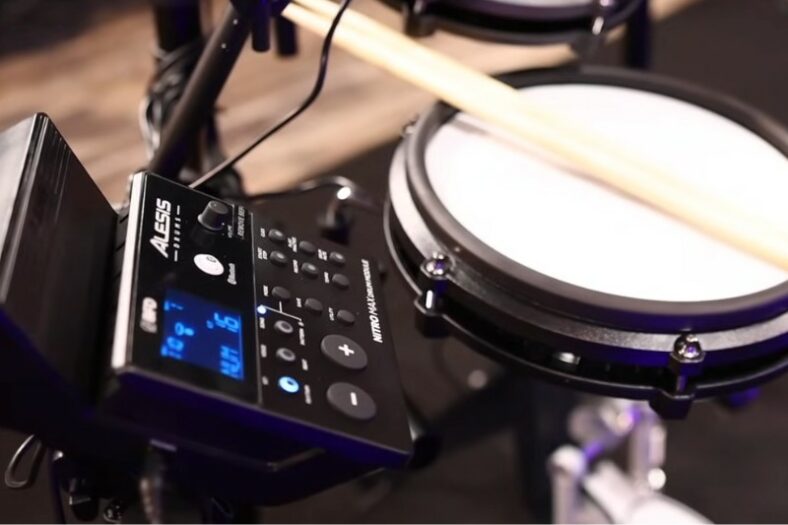
The drum set’s central processing unit, the drum module, generates sounds in response to the drummer’s triggers and the selected sounds. There is a reason why they are called the “brain” of an e-drum set. They are one of the most important components in an e-drum kit as they do much more than just translate the hits into sound.
The connectivity ports are the most important things to look for in a drum module. Almost every drum module on the market nowadays has MIDI connectivity. MIDI is what allows you to connect your drum module to a computer and your DAW to use many different VST plug-ins.
Other basic functions of a drum module include: choosing your sounds and controlling your volume, sensitivity, and layers. Drum modules also have different practice modes built-in, metronome, and some even have Bluetooth.
Mid-range to high-end drum modules offer more useful features such as custom sampling and audio over USB. Some even have a built-in audio interface which is very useful for mixing the drum sounds during a live performance.
How Important Are The Sensors?
Sensors are the most important thing in an e-drum kit. Depending on the price and brand, you can get an e-drum kit with great sensors and low latency or an e-drum kit that is almost unplayable because of bad sensor technology. Unfortunately, finding information about the sensors of a specific e-drum kit is much more difficult than finding information about the features of a drum module.
The sensors’ job is to detect the hitting position and dynamics of the drummer. Some pads, such as Roland’s latest PD-140DS digital snare, have a new multi-element sensor system, which is even more accurate. And that’s only one part of it. After detection, it must transfer the information to the drum module as quickly as possible. Fast response times depend on high-speed data transfer, which sets most sensors apart.
Can I Add Extra Drum And Cymbal Pads?
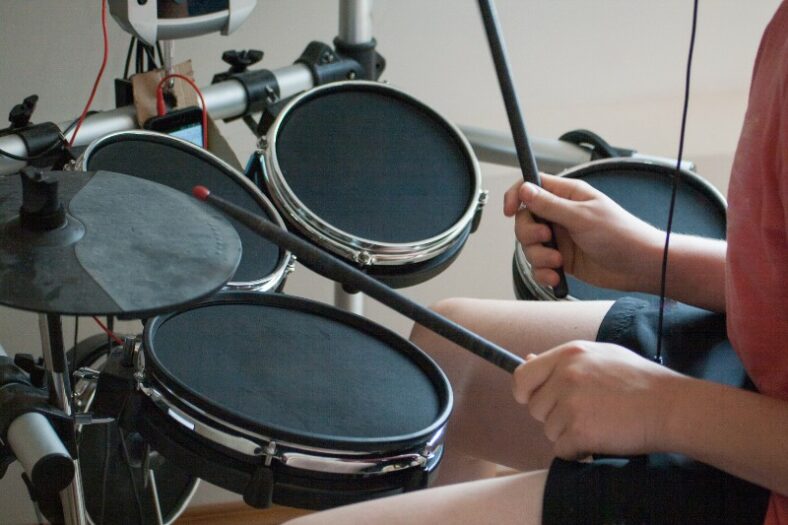
That depends on the e-drum kit you decide to buy, specifically, the drum module that comes with it. Some drum modules don’t have additional pad inputs, while others offer many of them. Expendability is something you want to think of in the early stages when buying an e-drum kit.
What Are The Advantages Of Using Electronic Drums?
Portability. One of the most significant advantages of electronic drums is their convenient design. They can be set up and played almost anywhere because they don’t require as much space as an acoustic drum set would.
Versatility. You can choose from quite a lot of sounds that come with the drum module, and if that is not enough, you can always turn to VSTs. Most drum modules offer good effects and sound editing capabilities, so you won’t get bored quickly with playing the same sounds.
Quiet Practice. E-drum shine for quiet practice sessions. If you’re living in an apartment and want to avoid noise complaints, electronic drums make for an ideal companion. They produce a significantly lower volume when struck and the outgoing sound can go into an amp which you can turn down or directly into your headphones.
Recording. Acoustic drum kits are a hassle to record. You need additional space, microphones, and a suitable environment (either a soundproof studio or a large space with good acoustics) if you want excellent audio. That’s not the case with e-drums. They are significantly easier to record as they are not slaves to these conditions and can be plugged in directly to your PC (DAW), to produce an amazing sound.
Price. Most beginner and intermediate-level e-drums are quite affordable considering the features and value they bring to the table. With acoustic drums, as mentioned, you need additional accessories which can bring the price up quite a bit. That being said, there are expensive e-drums on the market. When push comes to shove, e-drums bring a lot more value for the price and are usually more affordable than their acoustic counterparts.
Are Electronic Drums Good For Beginners?
Absolutely! Almost every e-drum kit has different learning and practicing features that will help you improve your drumming. Beyond that, they are quiet, so you won’t disturb anyone while practicing and perfecting your skills as a drummer.
Another great advantage for beginners is that you can easily move them around. They are easy to transport from your bedroom to your practice place, to the studio, and so on. Many private music schools these days have e-drum kits in their offices, which are more convenient than traditional acoustic drum sets.
Conclusion
There is a lot that goes into designing and manufacturing electronic drums and in order to fully understand how they are built, you would have to be an engineer. Nevertheless, these complex pieces of electronics are the reason for the “low barrier to entry” or so to speak, to an amazing musical journey!

